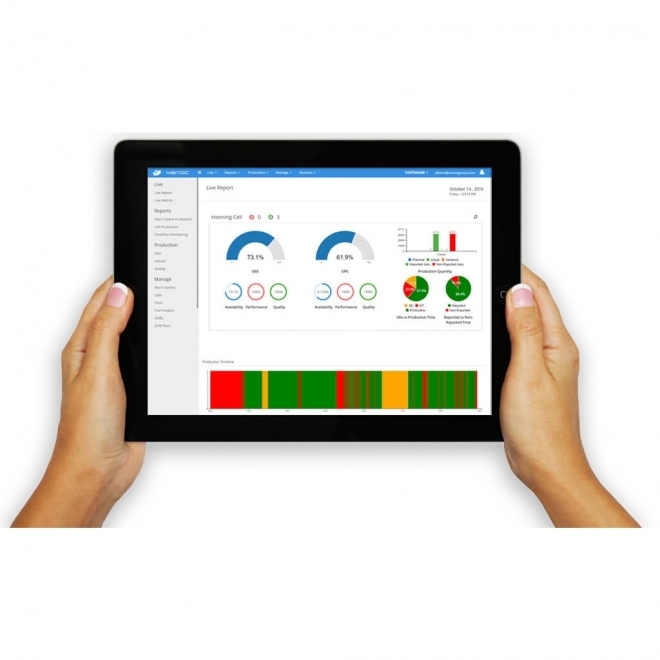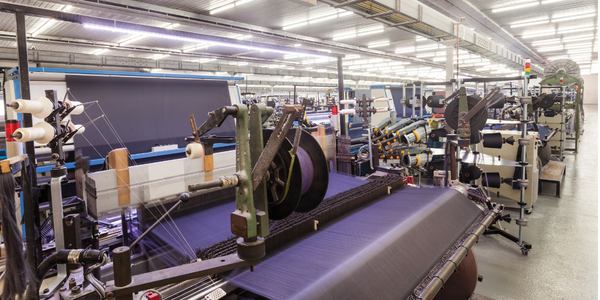Customer Company Size
Large Corporate
Region
- America
Country
- United States
Product
- nGeniusONE® Service Assurance platform
- InfiniStream® Appliances
- nGenius® Packet Flow Switches
Tech Stack
- Software Defined Networking (SDN)
- Cloud-based services
Implementation Scale
- Enterprise-wide Deployment
Impact Metrics
- Cost Savings
- Productivity Improvements
Technology Category
- Infrastructure as a Service (IaaS) - Cloud Computing
Applicable Functions
- Discrete Manufacturing
- Business Operation
Use Cases
- Factory Operations Visibility & Intelligence
- Infrastructure Inspection
Services
- Cloud Planning, Design & Implementation Services
- System Integration
About The Customer
The customer is a U.S.-based global manufacturer that supplies products used by millions of consumers on every continent. The company has tens of thousands of employees and manufacturing facilities around the world. The company is a global icon and has a passion for leveraging technology innovations in every corner of their operations. To meet global operational needs, this major manufacturer recognized the importance of being a world-class technology leader in their industry. However, excessive operating expenses associated with outdated data centers was costing millions a month. The company’s management determined it was imperative to re-architect its worldwide manufacturing operations in order to design, build, sell and service its products anywhere in the world.
The Challenge
The U.S.-based global manufacturer was facing high operating expenses due to outdated data centers, costing millions per month. The company needed to consolidate its data centers, implement a software-defined networking solution (SDN), automate services, deploy applications faster, and introduce a cloud strategy to reduce operating expenses (OPEX). One of the biggest challenges was transitioning from four legacy to two new data centers within an extremely tight timeline. Any delays would negatively affect the ability to realize projected cost savings. In addition, the consolidated data center footprint would require an expedited ability to triage any problems. This could result in production services delays and the loss of millions of dollars.
The Solution
To address its data center migration and production services challenges, the IT team turned to NETSCOUT. The nGeniusONE Service Assurance platform with Adaptive Service Intelligence™ (ASI) technology was combined with InfiniStream appliances strategically deployed across the service delivery path for monitoring and key analysis. They also deployed nGenius packet flow switches architected to provide visibility to the InfiniStream appliances simultaneously with their other security tools. The NETSCOUT solution was used to test and validate the pre-production application centric infrastructure (ACI) environment before commencing migration to the company’s new production data centers. The solution delivered real-time monitoring of the new connectivity points and Internet connections for the manufacturing production application, which is vital to the company’s operations around the world.
Operational Impact
Quantitative Benefit

Case Study missing?
Start adding your own!
Register with your work email and create a new case study profile for your business.
Related Case Studies.

Case Study
Accelerate Production for Spirit AeroSystems
The manufacture and assembly of massive fuselage assemblies and other large structures generates a river of data. In fact, the bill of materials for a single fuselage alone can be millions of rows of data. In-house production processes and testing, as well as other manufacturers and customers created data flows that overwhelmed previous processes and information systems. Spirit’s customer base had grown substantially since their 2005 divestiture from Boeing, resulting in a $41 billion backlog of orders to fill. To address this backlog, meet increased customer demands and minimize additional capital investment, the company needed a way to improve throughput in the existing operational footprint. Spirit had a requirement from customers to increase fuselage production by 30%. To accomplish this goal, Spirit needed real-time information on its value chain and workflow. However, the two terabytes of data being pulled from their SAP ECC was unmanageable and overloaded their business warehouse. It had become time-consuming and difficult to pull aggregate data, disaggregate it for the needed information and then reassemble to create a report. During the 6-8 hours it took to build a report, another work shift (they run three per day) would have already taken place, thus the report content was out-of-date before it was ever delivered. As a result, supervisors often had to rely on manual efforts to provide charts, reports and analysis.

Case Study
AUDI AG 20% PRODUCTIVITY IMPROVEMENT
In the automotive industry, niche products are becoming more and more important. The automobile industry has changed considerably over the past few years. No doubt: to remain competitive, instant reaction to specific customer requests is of utmost importance. In a parallel to the growing individualization of our society, the range of models available from Audi has increased as well.

Case Study
Automotive Component Manufacturer Improves with Datonis IoT Solution
As a part of their Industry 4.0 initiative, the customer primarily wished to leverage IoT for maximizing operational efficiencies, productivity, reducing the energy footprints and maximizing capacity utilization. But there were several challenges at the outset:Firstly, the customer had multiple assembly lines with a diverse set of machines, systems and sensors, all communicating on different protocols. As such, primarily they needed a partner who could connect diverse set of assets on to a single platform and make use of underutilized ‘dark’ data.Secondly, the amount of data, data types and their applications was so vast, that the platform handling it, needed to be scalable and flexible.Lastly, Varroc faced the typical challenge of innovating in ‘Brownfield’ markets – wherein the real bottleneck is in integrating IoT in tandem with both the new and legacy equipment without any further CAPEX for asset substitution.

Case Study
Improving productivity and quality in Textiles
VISIBILITY - Currently unable to see amount of power consumed per machine or plant; need to account for energy used per batch. WASTE - 10% of product fails quality standards, unable to identify point of failure (initial spinning, weaving, final processing, etc). INACCURACY - Acquiring OEE measurements and compiling them is a manual process, which lacks visibility into all parts of the production process and is error-prone. LACK OF INTEROPERABILITY - Outdated machinery still has long, effective lifespans but needs to connect to newer, digital assets

Case Study
IoE Increases Operational Efficiencies and Improves Energy Management
For many manufacturing companies today, the opportunity to connect people, process, data, and things created by the Internet of Everything (IoE) presents a new way to look at factory automation. The opportunity for digital innovation often arises when a company is expanding capacity or building a new production facility. Mahindra and Mahindra, one of India’s leading automakers, seized the opportunity to deploy a connected factory of the future at their new Chakan facility.




